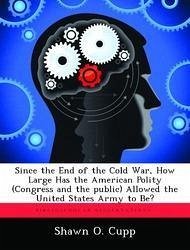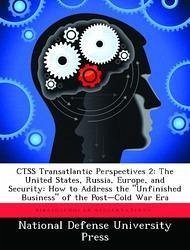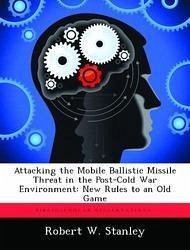Nicht lieferbar

Since the End of the Cold War, How Large Has the American Polity (Congress and the public) Allowed the United States Army to Be?
Versandkostenfrei!
Nicht lieferbar
During the post-Cold War era (9 November 1989 to 10 September 2001) a number of factors influenced the American polity (Congress and the American public) with regards to the size of the U.S. Army. The research question investigates how these factors influenced the U.S. Army size and whether the Army ever was not ready to conduct assigned missions because of these factors. These influences began with the fall of the Berlin Wall and continued with the subsequent demise of the Soviet Union. The need for a large military force diminished when the USSR imploded and the US was the sole remaining sup...
During the post-Cold War era (9 November 1989 to 10 September 2001) a number of factors influenced the American polity (Congress and the American public) with regards to the size of the U.S. Army. The research question investigates how these factors influenced the U.S. Army size and whether the Army ever was not ready to conduct assigned missions because of these factors. These influences began with the fall of the Berlin Wall and continued with the subsequent demise of the Soviet Union. The need for a large military force diminished when the USSR imploded and the US was the sole remaining superpower. The American polity called for a "peace dividend" and a dramatic drawdown of Army budget outlays and force structure occurred. The attitudes of the American public changed with regards to the military. A perceived military-civilian "gap" arose during this period of great turmoil. Also, during this period of time four Base Realignment and Closure commissions were conducted and reduced the Army infrastructure both in Continental United States and Overseas of Continental United States locations. The number of deployments that the Army conducted increased considerably, with more missions of peacekeeping and peace making rather than combat operations. This work has been selected by scholars as being culturally important, and is part of the knowledge base of civilization as we know it. This work was reproduced from the original artifact, and remains as true to the original work as possible. Therefore, you will see the original copyright references, library stamps (as most of these works have been housed in our most important libraries around the world), and other notations in the work. This work is in the public domain in the United States of America, and possibly other nations. Within the United States, you may freely copy and distribute this work, as no entity (individual or corporate) has a copyright on the body of the work. As a reproduction of a historical artifact, this work may contain missing or blurred pages, poor pictures, errant marks, etc. Scholars believe, and we concur, that this work is important enough to be preserved, reproduced, and made generally available to the public. We appreciate your support of the preservation process, and thank you for being an important part of keeping this knowledge alive and relevant.













